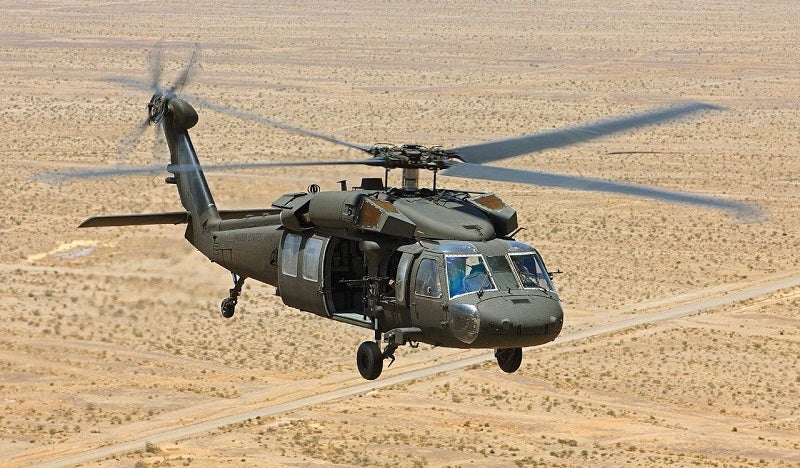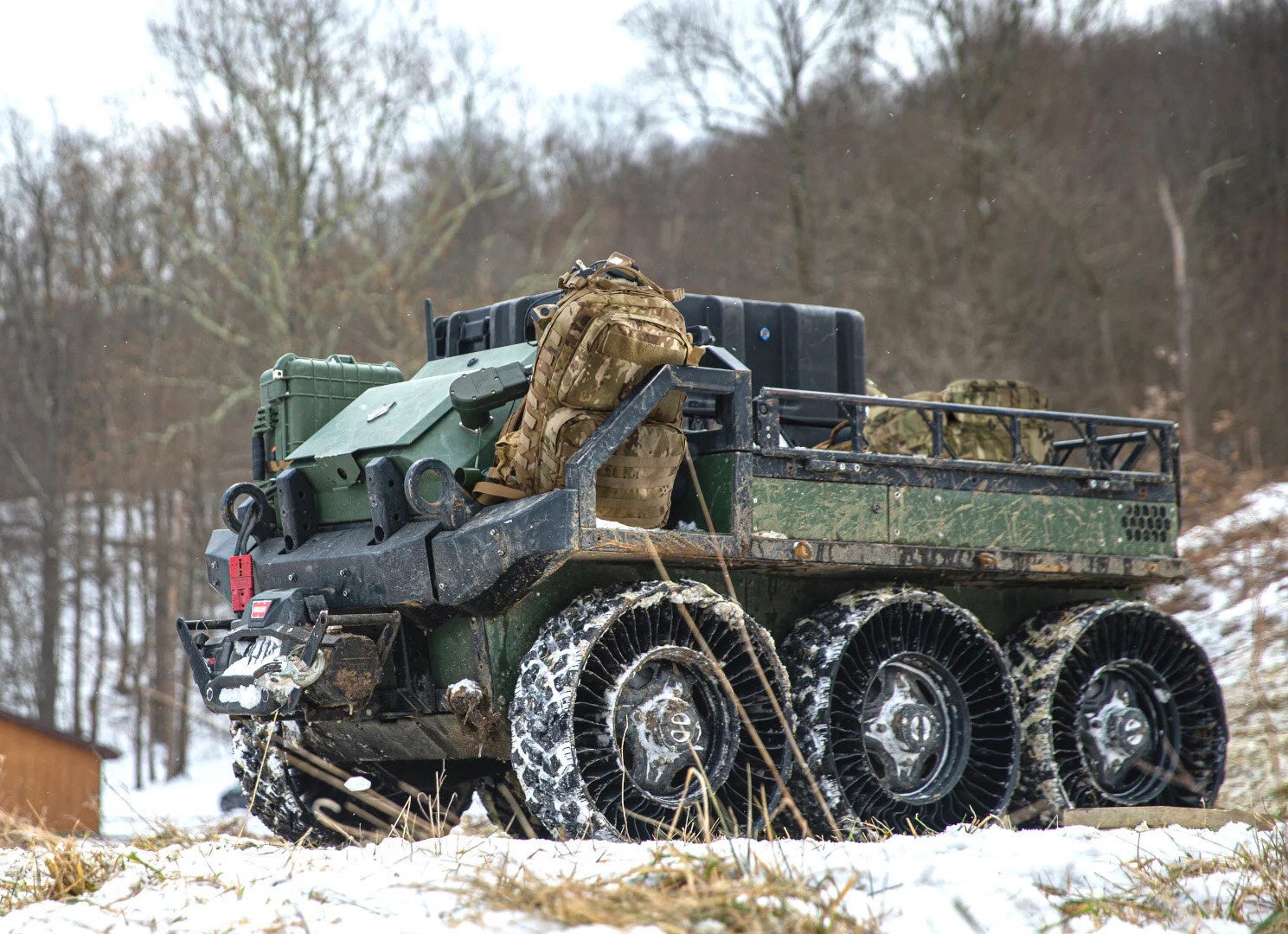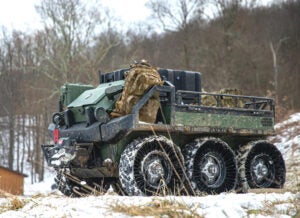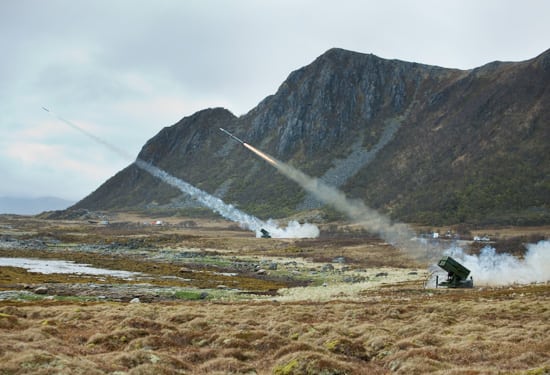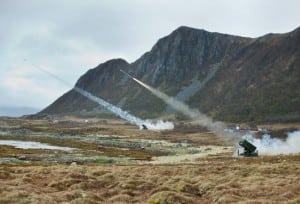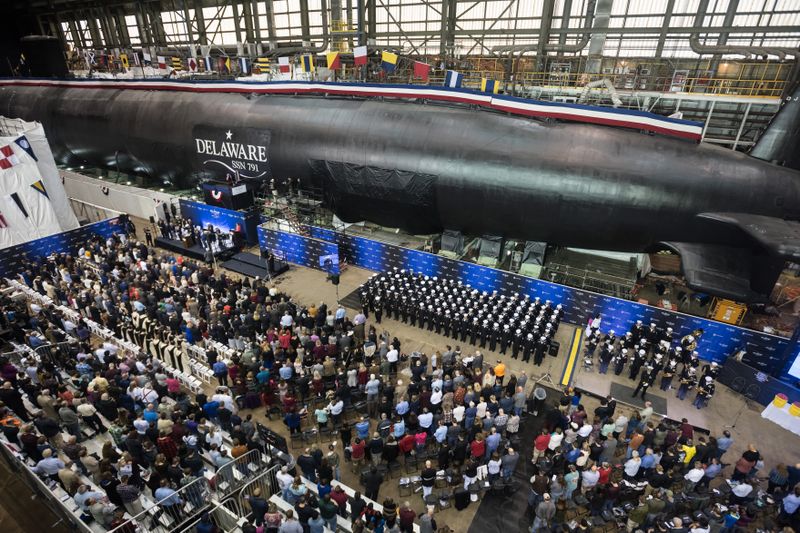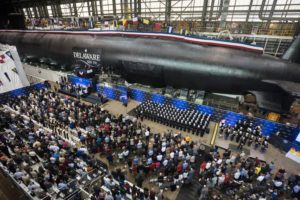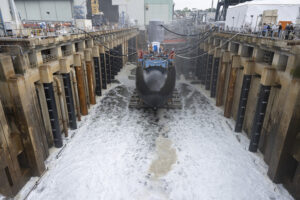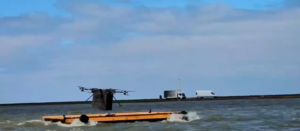The Navy is looking into options that would allow uncrewed vessels to continue to travel even if satellite navigation systems are denied in the environment, according to a recent notice.
According to a Request for Information (RFI) published on Oct. 25, The Naval Surface Warfare Center Panama City Division (NSWC PCD) is looking into the kinds of capabilities available for enhanced navigation on uncrewed underwater vehicles (UUVs) and uncrewed surface vehicles (USVs) “when Global Navigation Satellite System (GNSS) data is degraded or unavailable and where an a priori map (bathymetric, topographic, etc.) is not known.”

The Navy is interested in sensing modes like acoustic, electro-optic, and magnetic that can be deployed on uncrewed vessels ranging form man-portable to large diameter vehicles.
The RFI also said that feature extraction and general perception processing approaches should be considered in the technologies on offer.
The Navy said solutions “can augment inertial navigation systems to limit accumulation of position error (drift) or provide standalone localization via loop closure methods.”
These measures should be able to converge within the timeframe relevant for real-time operation, but without requiring an operator in the loop.
Concurrently, NSWC PCD issued another RFI looking into other technology to work on the same type of concerns.
The second notice is seeking information on embedded autonomy capabilities that would allow autonomous underwater vehicles and surface vehicles (AUVs and ASVs) to react in real time to sensor observations without requiring an operator in the loop.
The Navy notice said it wants embedded autonomy capabilities able to perform “dynamic, reactive missions based on real time sensor observations.”
The RFI listed technologies of interest like obstacle avoidance and navigating around exclusion zones created by onboard sensors; ability to dynamically track and follow targets just by using sensor input; dynamic route planning to change routes and objectives based in observations using onboard sensors like obstacles; real-time adjustment of task prioritization based on factors like in-situ created tasks, distance to objective, and time or energy cost of competing a task; monitoring AUV and sensor health; and optimizing AUV/ASV path based on current and future mission objectives.
The Navy said it invites both small and large businesses to respond to the RFIs and responses to both are due by Nov. 26.
These capabilities could prove important in pushing autonomous naval capabilities forward to more widely deploy on the timeline Navy leadership wants.
In Chief of Naval Operations (CNO) Adm. Lisa Franchetti’s Navigation Plan, autonomy and unmanned naval systems are key part of her Project 33 effort to get significantly more assets to the field within three years.(Defense Daily, Sept. 18).
Under the plan, the CNO wants to integrate proven autonomous and uncrewed systems “for routine use by the commanders who will employ them.”
She also said the Navy aims to integrate mature capabilities into all of the deploying aircraft carrier and Expeditionary Strike Group certifications.


